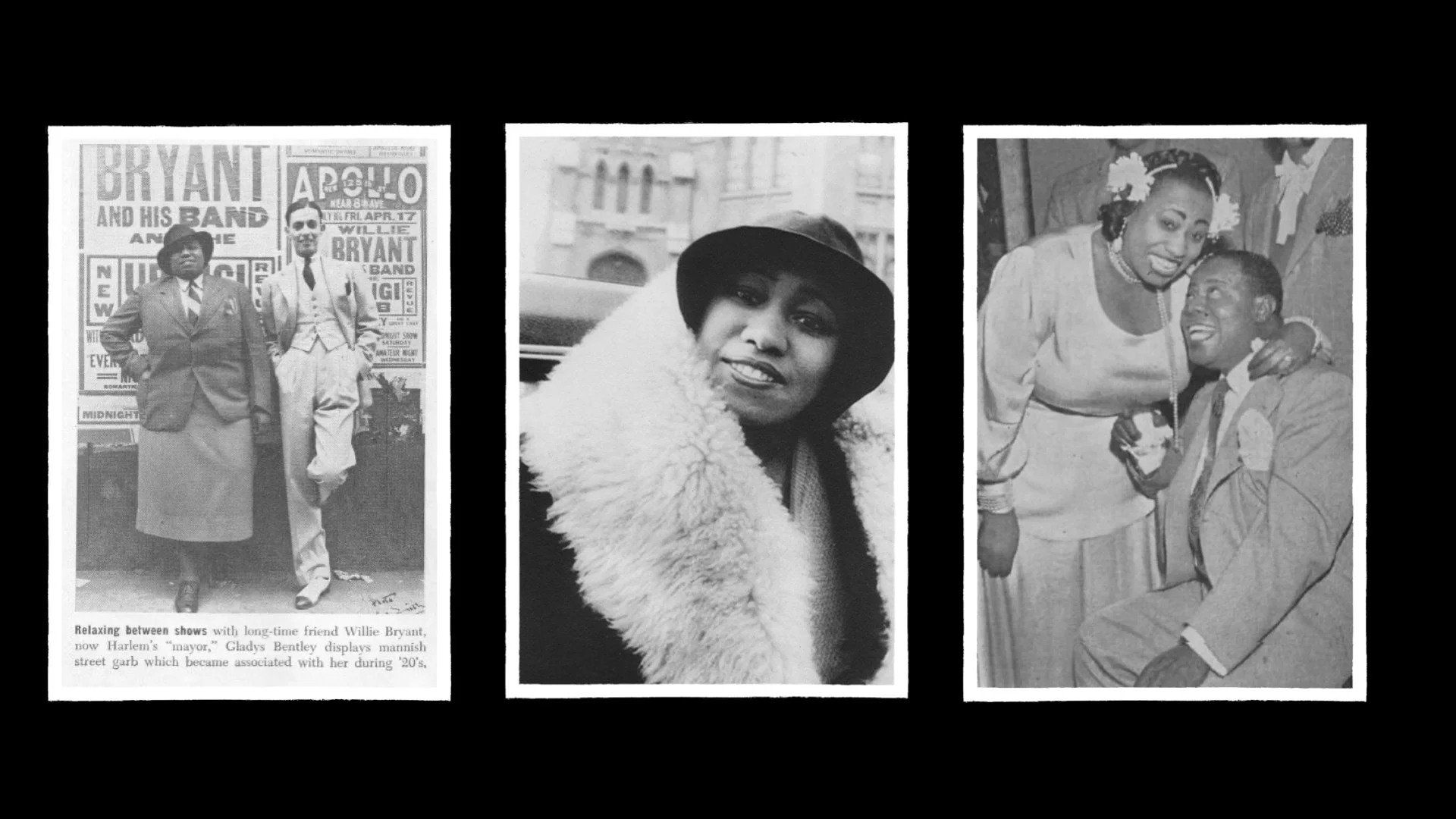#BlackHistoryMatters: Gladys Bentley
by Dr. Kimberly McNair, Stanford University
Gladys Bentley was a blues singer, pianist, and entertainer during the Harlem Renaissance. Bentley’s recording career lasted over 20 years. Born in Philadelphia, PA in 1907, Bentley ran away to New York City at age 16. There, Bentley gained acceptance in the community of vaudevillians and artists in midtown Manhattan and Harlem. Today, scholars and those versed in the use of gender pronouns would consider Bentley to be gender fluid or non-binary. Bentley was a drag king (publicized as a “male impersonator”) and Black queer pioneer whose masculine image has impacted queer culture and fashion.
A contemporary of influential Black queer women entertainers Billie Holiday and Moms Mabley, Bentley’s unique style of dress, explicit lyrics, and music captivated audiences. Bentley was a Black dandy, and used their 300-pound body, raspy voice, and trademark tuxedo, top hat, cane, and gloves to upend gender expectations and norms around race, class, and sexuality. Bentley was a headliner at spaces like The Cotton Club, openly flirting with women in the audience, and The Ubangi Club where they were accompanied by a chorus of drag queens. Langston Hughes praised Bentley as “an amazing exhibition of musical energy—a large, dark, masculine lady, whose feet pounded the floor while her fingers pounded the keyboard—a perfect piece of African sculpture, animated by her own rhythm.”
The Great Depression and Prohibition era brought on years of hardship. Bentley moved to California in 1937 and was forced back into the closet due to legal scrutiny for wearing men’s clothes and the out and open nature of their sexuality. Bentley was targeted for investigation by the U.S. House Committee on Un-American Activities during the height of the Jim Crow era. As a Black queer female-bodied person, Bentley, once considered a popular spectacle of the Harlem jazz scene, was now perceived as a homosexual menace due to the very visibility that gained them notoriety and success. The “lavender scare” of the mid-20th century, societal moral panic, and the institutionalization of homophobia normalized the legal persecution of queer people. The McCarthy Era tactics of targeting Black entertainers as communist sympathizers also heightened the level of institutional racism Bentley faced. For the – literal and figurative – “fashion police,” these acts of race and gender cross-dressing constituted criminal acts.
According to Bentley, writing about their alleged conversion to heterosexuality in the 1950s, they “inhabited that half-shadow no-man’s land which exists between the boundaries of the two sexes.” However, this “in-between” Bentley occupied, in the light, was a space denied to Black queer entertainers historically. Though primarily remembered as a musician, Bentley’s iconic self-presentation influenced fashion history and transgressions to this day.
Gladys Bentley died of influenza in 1960. They were 52 years old.
Dr. Kimberly McNair is is a scholar and researcher with training in historical and interdisciplinary methods. She has specific interest in 20th and 21st century African American material history and media culture since 1965. Her work focuses Black expressive culture in post-civil rights Black America. She also has a specific interest in Black women's labor and textile production.



